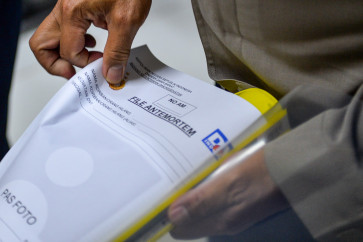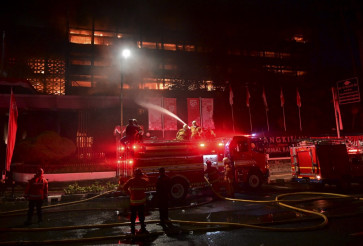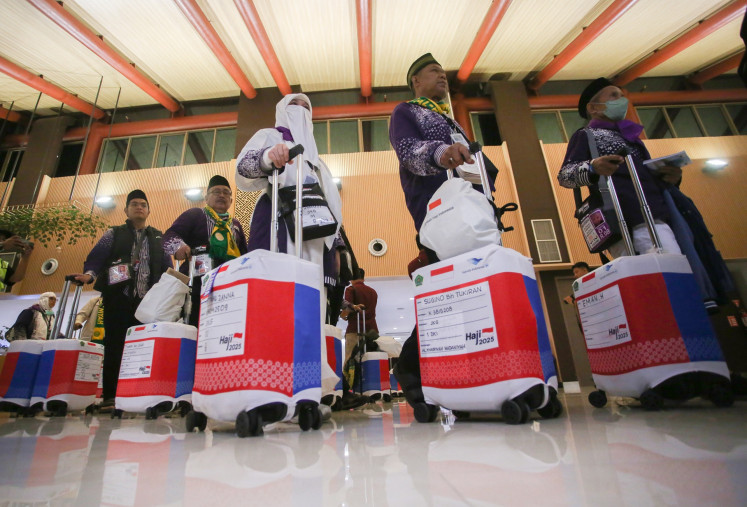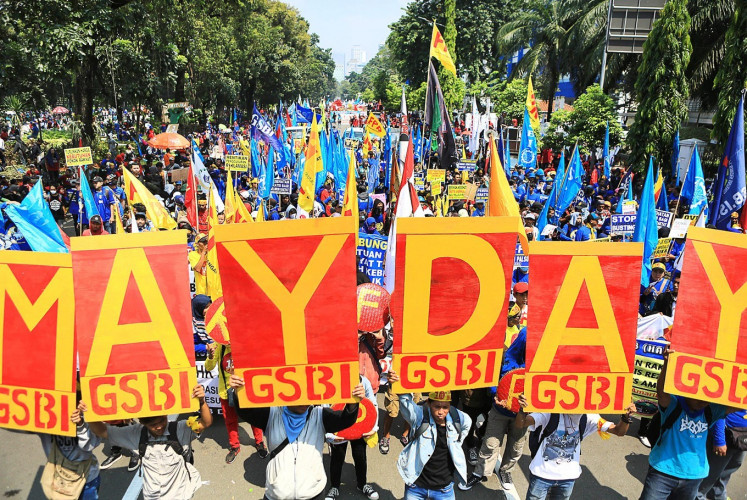Whither Southeast Asia's 2020 climate targets?
Increasingly frantic efforts are emerging to solidify an international agreement to halt climate change
Change text size
Gift Premium Articles
to Anyone

I
ncreasingly frantic efforts are emerging to solidify an international agreement to halt climate change. The upcoming climate change meeting in Paris this December (known as COP21) will be one of the most significant milestones in climate change history.
At this meeting, parties to the United Nations Framework Convention on Climate Change (UNFCCC) are expected to come to an international agreement that includes national 'contributions' (emission reductions) to curb climate change.
However, in the race to finalize each country's climate change mitigation plan, some critical pieces of the climate change puzzle may be left out ' most importantly, forests and the land sector.
One of two tracks in responding to climate change is mitigating global warming through either reducing emissions or sequestering greenhouse gases. This mitigation approach is a major focus of the Paris negotiations and the emission targets being set in each country's planned contributions.
These national emission targets, called Intended Nationally Determined Contributions (INDCs), are a centerpiece of the upcoming agreement in Paris. INDCs are the primary means for governments to share the steps they will take to address climate change in their own countries and reflect each country's ambition for reducing emissions, taking into account its domestic circumstances and capabilities.
In coming to their own nationally determined emission targets that will come into full effect in 2020, many countries are choosing either sector-specific or economy-wide emissions targets. The final deadline for inclusion in the Secretariat's synthesis report of INDCs in the Paris agreement was Oct. 1.
In Southeast Asia, only Singapore has submitted to date. Countries in Asia are active parties to the UNFCCC and in many respects are leading the way in progressive actions to curb or respond to climate change. A new report by the Union of Concerned Scientists notes that some developing countries are producing more ambitious and robust emission targets than industrialized countries.
However, as details of these drafts emerge, one sector is often limited or conspicuously absent: the land sector. Land use is defined as how the land is used, whether it be forest land, agriculture, settlements and any other uses.
_____________________
Complex accounting methodologies for the land use sector have been a hurdle.
Globally, and particularly within the region, the land sector is an essential part of any strategy to respond to climate change. It represents around 25 percent of total global emissions. It is unique amongst sectors (such as industry and transport): It has the potential to not only reduce carbon emissions but also to capture and
sequester them.
In addition to the positive role in reducing emissions that the land use sector can play, poorly managed, they can be a major source of emissions: up to 80 percent in some countries.
While no magic bullet exists to resolve global warming, the land use sector will need to be an important part of any long-term responses to addressing climate change. If land is managed sustainably, equitably and effectively, balancing multiple goals including reducing global emissions and protecting areas that can absorb greenhouse gases becomes possible.
Despite support from various state and non-state actors following COP20 in Lima, inclusion of land use in country contributions has not played out as envisioned by many observers. Complex accounting methodologies for the land use sector have been a hurdle.
In addition, the sector does not have a single unified body of advocates (instead a set of domestic agencies responsible for agriculture, forestry, water and land use planning) and cannot compete with industry in lobbying clout or establishing a coherent agenda. Political and social sensitivities are high when facing land use targets where large or vulnerable constituencies such as forest-dependent indigenous groups are affected.
Finally, within the region, ministries responsible for climate change and the national emission target development process traditionally have weak links and collaboration with national forestry and other land use agencies.
Despite being at various stages of economic transition, many Asian countries remain fundamentally agrarian and dependent on natural resources and would benefit from more strategic, sustainable land use. The region serves as a phenomenal potential carbon sink, containing some of the largest and most biodiverse tracts of forest in the world.
Poor representation of the land use sector to date in national contributions is not deterministic or inevitable. One of the few countries to include explicit forest targets to date, Lao PDR, like many others in the region, lacks detailed forest sector baseline data. Lao PDR has instead opted for forest sector-based policies and programs as a means of expanding and improving the forest base for carbon sequestration ' an approach that other countries in the region could adopt.
With support, vision, and especially encouragement from civil society, the countries in the region need to find ways to include the land use sector in their national targets.
Failure to do so will represent a missed opportunity for a scenario where global emissions are reduced, high quality forests return, ecosystem services and biodiversity prosper, and rural communities in the region see livelihoods improved and resilience against climate change impacts strengthened.
With COP21 on the horizon, it is not too late for countries to submit and refine the actions they will take to limit GHG emissions. We thus call on countries in the Asia-Pacific region and the global community to work together to make this happen.
The Agriculture, Forestry and Other Land Use Working Group of the Low Emission Development Strategies Global Partnership is working to help countries develop low emission strategies precisely because sustainable land management can both reduce emissions and sequester carbon.
_____________________________
The writer is a senior program officer at RECOFTC ' The Center for People and Forests, an international organization for peoples and forests in the Asia Pacific.









